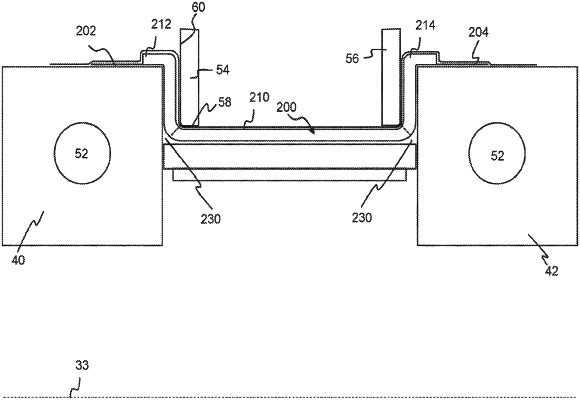| CPC B29B 11/16 (2013.01) [B29C 70/34 (2013.01); B29D 99/0025 (2013.01); F01D 25/243 (2013.01); B29K 2105/06 (2013.01); B29L 2031/08 (2013.01); F05D 2220/32 (2013.01)] | 19 Claims |

|
1. A method of manufacturing a composite component comprising a main body and an integral flange, the method comprising:
applying fibre-reinforcement material on a tool having a main body portion and a flange-forming portion to provide a pre-form comprising:
a body region and a longitudinally adjacent flange region contiguous with the body region, the body region corresponding to the main body of the composite component and the flange region corresponding to the integral flange of the composite component;
wherein the pre-form extends longitudinally between two longitudinal ends; and
wherein a trailing ply of the pre-form extends longitudinally between the longitudinal end closest to the flange region and an opposing ply end, the trailing ply having an orientation substantially aligned with a longitudinal direction;
causing relative movement between the flange-forming portion and the main body portion so that the flange region of the pre-form deforms to form the integral flange of the composite component;
wherein the relative movement between the flange-forming portion and the main body portion causes sliding movement between the trailing ply and the flange-forming portion, thereby causing a tension force in at least the flange region of the pre-form during forming of the flange.
|